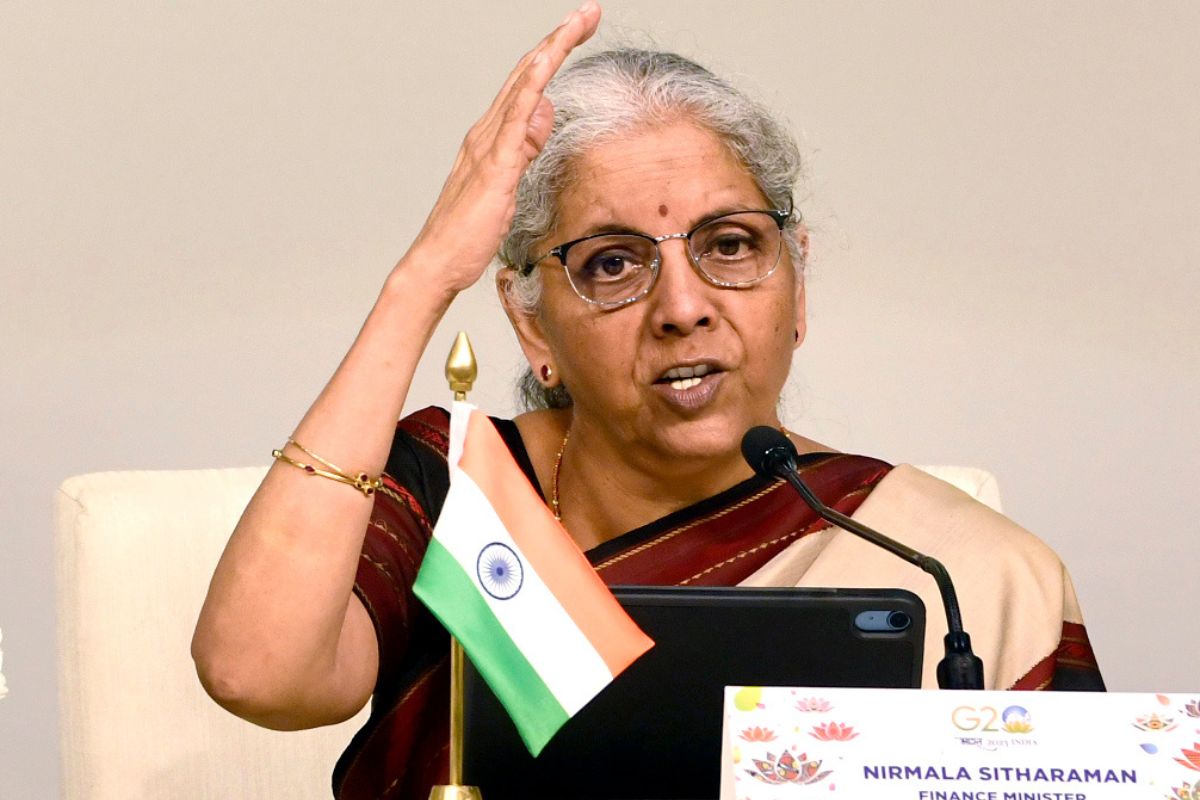Politicians can’t afford to have long memories but it was quite amusing to see Congress leaders cry hoarse over the packages given to Andhra and Bihar in the Union budget as “pakodas and jalebis” given to two states while depriving all others. In fact, Congress and the INDI alliance had promised much more than pakodas and jalebis, only that they are in no position to give anything.
They forgot that soon after the recent Lok Sabha elections, when the INDI block was desperately trying to cobble up the necessary numbers for making a government, they tried to win Nitish Kumar over with the promise of his pet “Special Category Status”. The same status was also promised to Andhra 10 years ago by Dr Manmohan Singh on the floor of the Parliament itself when Telangana was carved out of the undivided Andhra Pradesh to serve the electoral interests of the Congress party.
Advertisement
In fact, other promises were also made to Andhra, which had lost most of its revenue when two of its most prosperous districts, Hyderabad and Ranga Reddy, went to Telangana. That bifurcation had left Andhra high and dry, since it got only 46 per cent of the revenue with 58 per cent of the population of the undivided state, while inheriting a huge debt liability of Rs 1.3 lakh crore. The promises were included in the Andhra Pradesh Reorganisation Act 2013, which recognised Polavaram Irrigation Project to be a national project whose development was to be taken up by the Centre. In addition, “special financial support” was promised for establishment of a new capital, besides expansion of physical and social infrastructure in backward areas.
Now Ms Nirmala Sitharaman is just fulfilling these promises to Andhra, by promising to “facilitate special financial support through multilateral development agencies” instead of giving outright grants of Rs 15,000 crore in the current year, and promising more in the future.
She also promised to finance the completion of Polavaram Irrigation Project which is a lifeline for the state’s agriculture. Funds have also been promised for infrastructure of water, power, railways and roads as well as for backward regions, as stated in the Act itself. For Bihar similarly, instead of granting it special category status which would have given additional cash to a state that cannot even utilise its current budgetary allocations, she has taken a much more productive route of providing capital for infrastructure projects that would create employment in a state that needs this more than any other, in keeping with her single-minded focus on employment in the budget.
Rs 26,000 crore has been earmarked for infrastructure of highways and a bridge over the Ganga, Rs 21,400 crore has been promised for a power plant and Rs 11,500 crore for flood management. New airports, medical colleges and sports infrastructure are also to be created, apparently with multilateral assistance that comes with stringent conditions and effective monitoring. Given Bihar’s dismal record in proper utilisation of capex funds as indicated by the collapse of 15 bridges in the last two months, the assistance route is much more preferable.
Indeed, the package is way better than the UPA government’s grants, for example, to special category states which came without any accountability or performance expectation from them and naturally led to massive waste and leakage. Ms Sitharaman’s budget this time catered to the needs of the voters who made their voices heard loudly and clearly in election results that did not give BJP a majority in Parliament. Survey after survey had pointed to the dissatisfaction over lack of adequate employment opportunities for youth who were entering the workforce every year in huge numbers. The government’s past efforts were inadequate, and this time, the FM rose to address their needs rather than cater to the expectations of the market which gave a thumbs-down to the budget.
Market and investors were unhappy at the long-term capital gains tax being hiked by 2.5 per cent and for eliminating the indexation benefits from capital gains on property acquired after 2001, though reducing the rate from 20 to 12.5 per cent and for increasing the securities transaction tax on certain transactions. Taxpayers were unhappy at not getting the expected reliefs on income tax despite not getting any concession last year. But the FM had a difficult task to balance the budget while keeping the fiscal deficit low. The budget has indeed reassured the government’s commitment on fiscal consolidation by targeting the fiscal deficit for the year to 4.9 per cent instead of 5.1 per cent as proposed in the interim budget presented before the elections.
The FM has promised to bring down the fiscal deficit to 4.5 per cent in the next budget. This has been possible due to higher collections from income tax, corporation tax and GST, besides substantially higher dividends not only from the RBI but also from Central PSUs. That is why perhaps there has not been any aggressive move to disinvest or sell the PSUs during the last few years; the Centre’s non-debt receipts from disinvestment have in fact decreased from the level of Rs 72,200 crore in 2022-23. The reduction in fiscal deficit has the potential of setting off a virtuous cycle in many ways. The net borrowing during the year will come down from Rs 18.26 lakh crore as per the revised estimates of last fiscal, to Rs 14.73 lakh crore during the current fiscal, which in itself is a remarkable achievement in moving towards debt sustainability after the unusually high borrowing forced by Covid.
The reduced government borrowing means not only lesser interest burden on the exchequer, but also lesser inflation and hence lesser pressure on interest rates while freeing more funds for the private sector to borrow at cheaper rates, which the banks, having reduced their NPAs, are in a better position to lend. It may also nudge the credit rating agencies to upgrade the long overdue credit rating for India. If that happens, more FDIs will flow into the country from outside, creating more avenues for employment. Another measure ~ the abolition of Angel tax ~ is also likely to facilitate inflow of FDI into the startup sector.
Employment is the crux ~ the word has been used in the budget speech as many as 34 times. The focus is not on creating employment within the government as the Congress would have done ~ its manifesto had promised filling some 30 lakh vacancies in sanctioned posts in the Central government without considering productivity or the humongous costs it would inflict on public finances, derailing it completely from the consolidation path being followed by the NDA government. The FM has instead promised to create and enhance the employability of our youth which our decrepit education system is grossly inadequate to ensure.
The internship programme aims at this by promising to train one crore youth in 500 top companies in the next five years, that is, about 4,000 youth per company per year at a huge cost of Rs 5,000 per month for every intern, along with a one-time assistance of Rs 6,000. Companies will be expected to bear the training cost and 10 per cent of the internship cost from their CSR funds. Whether these one crore youth will actually be hired by the companies after their training remains to be seen. Some certainly will get jobs, but some may end up acquiring skills and still seeking jobs in a market daily being disrupted by AI. The Congress is accusing the NDA of stealing their scheme, they should rather be happy if a good scheme devised by them has been implemented by the government.
Another such scheme is skilling 20 lakh youth over a fiveyear period through 1,000 Industrial Training Institutes ~ one hopes that the market needs would be factored in. This year about 38 per cent of IIT graduates could not be placed after graduation ~ one reason would be a mismatch between skills and market requirements. The FM has promised 3 other schemes for ‘employment linked incentive’, based on EPFO enrolment, focussing on recognition of first-time employees and support to employees and employers: a DBT of one-month salary in three instalments to first-time employees up to Rs 15,000, incentive both to the employee and the employer for their EPFO contributions in the first four years of employment and reimbursement to employers up to Rs 3,000 per month for two years towards EPFO contributions for each additional employee.
Again, it remains to be seen how well companies respond to these schemes, and the safeguards that will have to be put in place to prevent misuse by them. To me, the best part of the budget was the promise to simplify the Income Tax Act of 1961 vintage to make it easily comprehensible to the layman. We have been waiting for it to happen over the last half century. Also enticing was the promise to rationalise GST after seven years, by bringing the exempted sectors within its scope. I would love to see real estate, crude oil, ATF, natural gas and alcohol at least to be included in GST with only three slabs, instead of the present seven ~ without reckoning the GST composition scheme. But given the dynamics of state politics, perhaps this will remain wishful thinking only
(The writer is a commentator, author and academic. Opinions expressed are personal)











